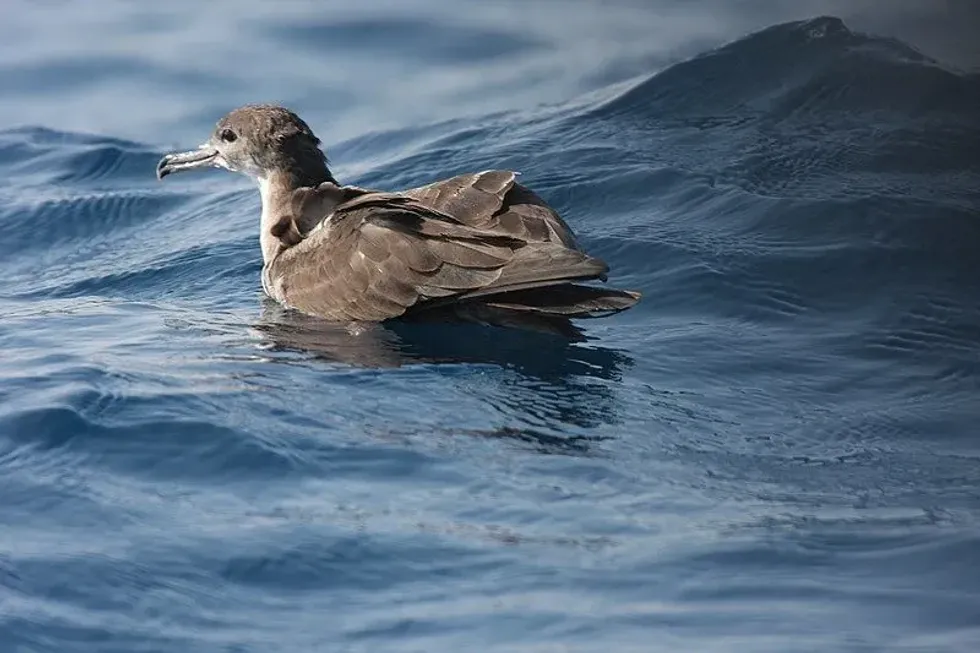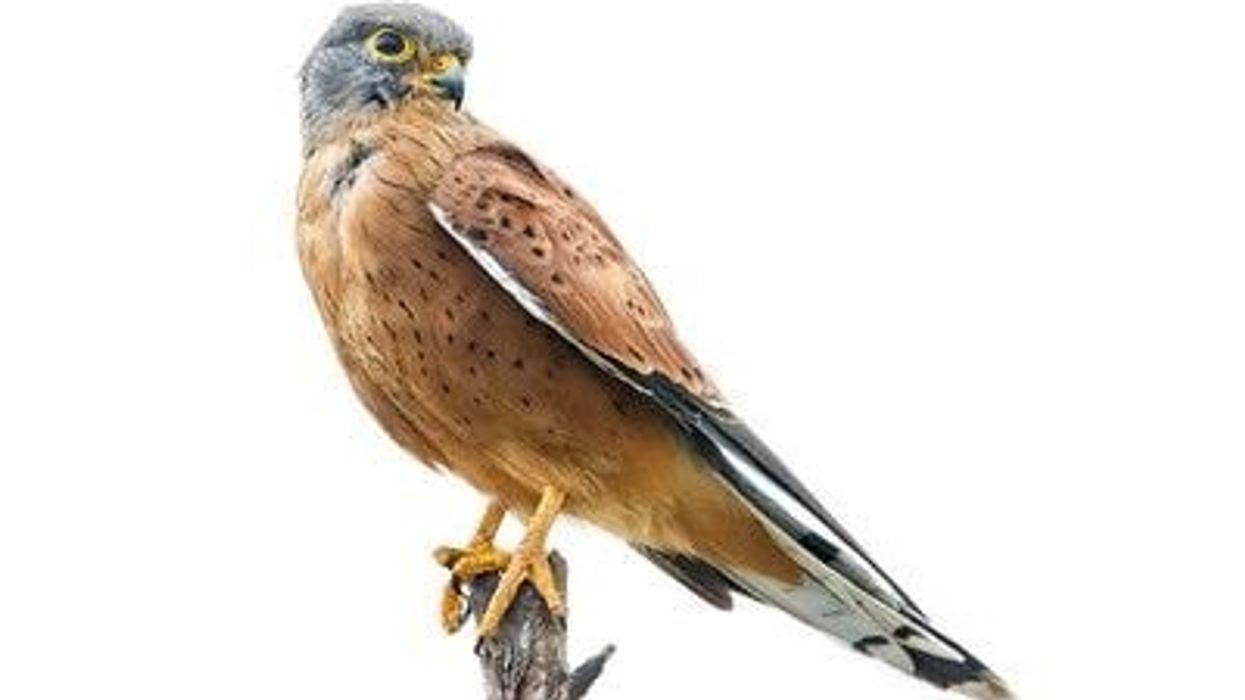Do you find shearwaters, like the yelkouan shearwater, fascinating? Then here we have all the information on the wedge-tailed shearwater (Ardenna pacifica). This species of seabirds got its name owing to its wedge-shaped tail.
They can be found mainly in the southern hemisphere, in the Pacific and Indian Oceans. These birds are found in Hawaii. The wedge-tailed shearwater Hawaiian name is 'Ua'u Kani.
The 'Ua'u Kani, or wedge-tailed shearwater, is the largest among all shearwaters. The wedge-tailed shearwater feathers come in two morphs - dark and pale morph.
However, both morph birds have slender bills and pale legs. The bill is usually dark slate gray-colored while the legs are flesh-colored. The females can be seen laying a single egg on average throughout the year according to their geographic range as the mating season of these birds occurs throughout the year.
The incubation period for the egg is about 48-63 days. Both parents then care for the chicks. These chicks fledge at about 115 days.
The primary diet of these birds consists of fish, like flying fish, squirrelfish, or goatfish. Squids and crustaceans can also be found in their diet. They search for prey close to the surface or just below the surface of the water.
Read on to know more about the wedge-tailed shearwaters and if you like this article, then also check out green heron facts and glossy ibis facts.
Wedge-Tailed Shearwater Interesting Facts
What type of animal is a wedge-tailed shearwater?
Wedge-tailed shearwater is a species of seabird.
What class of animal does a wedge-tailed shearwater belong to?
The wedge-tailed shearwater belongs to the family Procellariidae and class Aves.
How many wedge-tailed shearwaters are there in the world?
The global population of this tropical bird species is estimated to cross at least around 5,200,000 individual birds. They may be common throughout their habitat range, but their population is showing a decreasing trend.
Where does a wedge-tailed shearwater live?
Wedge-tailed shearwaters are primarily seen in the Pacific and Indian Oceans.
They breed off the coasts of various islands of the Indian and Pacific Oceans between the latitudes of 35 N and 35 S in the southern hemisphere, in islands off the west coast of Mexico, east and west coasts of Australia, Seychelles, Islands of Hawaii, Marshall Islands, Christmas Island, Solomon Islands, New Caledonia Islands, Samoan Islands, Fiji Islands, Norfolk Island, and more.
What is a wedge-tailed shearwater's habitat?
These tropical marine birds are strictly pelagic in nature. They are rarely seen on land unless they are staying in colonies during the breeding season. They breed in grasslands and forested areas of plateaux, flat ground, cliff tops, and slopes. This bird also breeds on atolls and offshore islands. This bird breeds in inshore waters only in east Australia.
Who do wedge-tailed shearwaters live with?
Wedge-tailed shearwaters can be seen in small groups or as a single bird. Flocks of about 100-150 birds can be seen easily when they search for food. The largest flock of this species consists of about 3,500 birds near the Ka'ula Rock of the Hawaiian Islands. Their breeding also occurs in colonies.
How long does a wedge-tailed shearwater live?
These birds have an average lifespan of about 10-11 years.
How do they reproduce?
The breeding season of the wedge-tailed shearwater bird occurs at different times throughout the year according to their geographic range. Like, the breeding season occurs around October–March at Chagos archipelago, it occurs around early August-late May in South Australia, or it occurs around early March-late November in Hawaii.
Both sexes mature sexually at about four years of age. These birds show monogamous nature.
Some birds arrive at the breeding colonies in late afternoons but mostly arrive at night. Some courtship behaviors can be seen among the two sexes, at night, the pair sit opposite each other and call duet songs, and in the day, the pair can be seen rubbing each other's neck and head.
After copulation, the female can be seen laying a single oval, long, and white egg.
After laying the egg, the pair or both parents then incubate the egg. The incubation period lasts for about 48-63 days.
After the incubation period ends, both parents take care of the chick. The chick fledges at around 100-115 days after the egg has hatched.
What is their conservation status?
The conservation status of this bird species according to the International Union for Conservation of Nature is listed as of Least Concern. Some of the threats these birds are facing are scarcity of food owing to excessive fishing, pollution, human disturbances in the islands where they live, and invasive species.
As these birds are still common, no conservation actions are being taken as of now.
Wedge-Tailed Shearwater Fun Facts
What do wedge-tailed shearwaters look like?

The wedge-tailed shearwater is a large-sized shearwater species. They are polymorphic, so birds of a dark shade and of a light shade can be seen.
All birds have a long tail, pale flesh-colored legs, a slender body, a dark slate gray-colored slender bill, a wedge-shaped tail, and a small head. The dark morph wedge-tailed shearwater has an overall brownish-black plumage.
The head and back of these birds are black while it turns to a lighter brown as it edges towards the wings. Their underparts are dusky brown-colored while their forehead, throat, and chin are grayish-brown colored.
The light morph birds have a paler appearance overall with their upperparts, nape, and head being dark brownish-gray in color while their underparts including their throat and chin are white.
Light mottled patterns are visible on the undertail, flanks, and the sides of the breast. Their underwings are also white with broad dark edges.
When in flight, the paler morphed wedge-tailed shearwaters look very similar to great shearwaters. The chicks look similar to adults, but with fresher plumage.
How cute are they?
These large birds are quite beautiful. They look extremely graceful when in flight. They also don't show any aggressive behavior unless they are threatened.
How do they communicate?
These tropical birds primarily communicate vocally. The usual wedge-tailed shearwater call sounds like wails, loud moans, and groans. During courtship displays, a series of short calls can be heard from these birds. These calls mainly occur in breeding colonies during the night. When they are being aggressive during combat or defending their territory they utter strong calls.
How big is a wedge-tailed shearwater?
An adult wedge-tailed shearwater is about 15-18.5 in (38-47 cm) in length and has a wingspan of about 31.2-42.9 in (97-109 cm) on average. They are larger in size than the little shearwater, which is about 9.8-11.8 in (25-30 cm) in length.
How fast can a wedge-tailed shearwater fly?
The exact speed at which the wedge-tailed shearwaters fly is not known. However, they have been seen to fly at a moderate pace by fluttering their wings quickly and sometimes by gliding.
How much does a wedge-tailed shearwater weigh?
An adult wedge-tailed shearwater weighs about 10.6-20.1 oz (300-570 g) on average.
What are the male and female names of the species?
The males of the species are called cocks and females of the species are called hens.
What would you call a baby wedge-tailed shearwater?
Baby wedge-tailed shearwaters are called chicks.
What do they eat?
Wedge-tailed shearwater feeding habit is carnivorous in nature. They can be primarily seen feeding on different kinds of fish, like flying fish, goatfish, squirrelfish, and more.
Their diet also consists of various types of crustaceans and squids. They mainly search for food during the day by contact dipping either just below the surface or searching close to the surface of the oceans.
Are they poisonous?
No, these birds are not known to be poisonous at all.
Would they make a good pet?
These are wild tropical birds, so they don't make good pets. They also stay near oceans, and as such habitats are required for them to survive it's better to leave them in their natural habitat.
Did you know...
A wedge-tailed shearwater, diving, when foraging for food, can reach the depth of as far as 66 m (217 ft).
A wedge-tailed shearwater similar species is the Buller's shearwater (Puffinus bulleri). Buller's shearwater (Puffinus bulleri) looks closer to the pale morph wedge-tailed shearwaters. Buller's shearwater (Puffinus bulleri) has more white feathers.
Upon the arrival of breeding or mating season, these pairs of birds nest in burrows in the ground. They excavate these burrows in breeding colonies where the pairs take part in building the nests in the burrows.
Are wedge-tailed shearwaters endangered?
No, these birds are not endangered. They are a species of Least Concern. They are facing some threats, like pollution, invasive species, human disturbances in their habitat range, or scarcity of food due to excessive fishing. However, they are still pretty common and the threats are not affecting their population on a large scale.
How did wedge-tailed shearwaters get their name?
All shearwater birds get their names from their style of flight where they shear across the water in the ocean, mainly at the front of the waves. The wedge-tailed shearwaters especially got their name from their long wedge-shaped tail.
Here at Kidadl, we have carefully created lots of interesting family-friendly animal facts for everyone to discover! Learn more about some other birds including the Australian pelican and common murre.
You can even occupy yourself at home by coloring in one of our free printable bird coloring pages.









